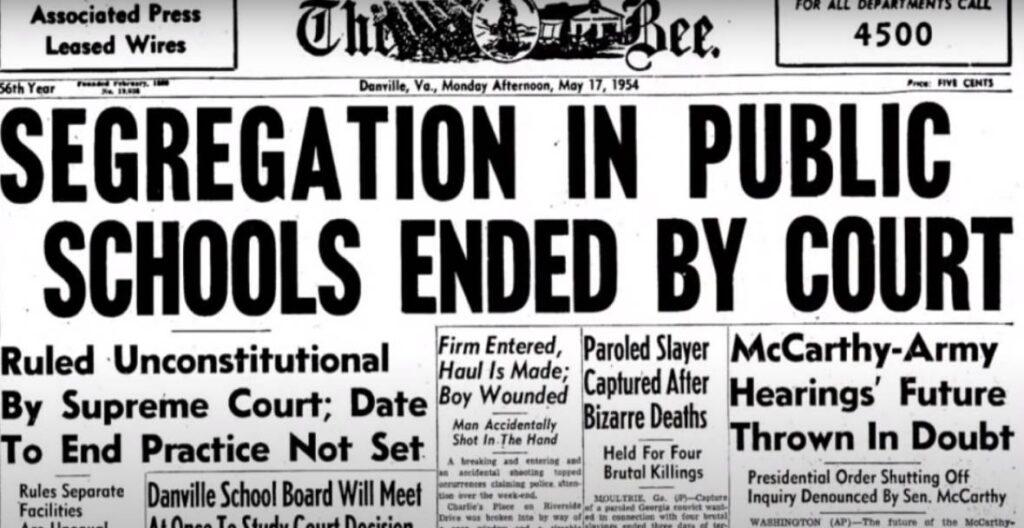Back in 1954, an important case called Brown v. Board of Education had a significant impact on the way America treated people of different races. This comprehensive guide delves into the factors that led to the Supreme Court’s intervention in this case, explores the enduring impact of its decision, provides a summary of the case’s proceedings, and examines the diverse range of opinions that emerged in response.
Why did the Supreme Court get involved in Brown v. Board of Education?
Context of Racial Segregation and “Separate but Equal” Doctrine: Racial segregation was deeply entrenched in American society, with “separate but equal” as the legal doctrine underpinning segregationist policies. This doctrine, established in Plessy v. Ferguson (1896), allowed for racially segregated facilities as long as they were ostensibly equal.
Constitutional Concerns and the Equal Protection Clause: Brown v. Board of Education challenged the constitutionality of this doctrine. Plaintiffs argued that racially segregated schools violated the Equal Protection Clause of the Fourteenth Amendment, which ensures equal treatment under the law.
Motivations for the Supreme Court to Address the Issue: The growing civil rights movement and shifting societal attitudes created a pressing need to address racial segregation. The Supreme Court recognized the contradictory legal precedents set by Plessy and other cases, prompting a reconsideration of the constitutionality of segregated schools.
Impact of its Decision
Social Repercussions of the Decision: The Supreme Court’s unanimous decision to declare racially segregated schools inherently unequal was a seismic shift. This decision had far-reaching social ramifications, inspiring hope among marginalized communities and galvanizing broader civil rights activism.
Transformation of Civil Rights Activism: Brown v. Board of Education became a rallying point for civil rights activists. It energized protests, boycotts, and demonstrations that demanded an end to segregation not only in schools but also in public spaces and institutions.
Influence on Subsequent Legal Battles and Policies: The decision’s implications extended beyond education. It provided a legal foundation for challenging segregation in various areas of public life, leading to subsequent legal battles that sought to dismantle discriminatory practices.
Summary of Brown v. Board of Education
Background of the Case and Plaintiffs’ Arguments: The case originated from a collection of lawsuits challenging racially segregated public schools. The plaintiffs argued that segregation resulted in inherently unequal educational opportunities for African-American children.
Court Proceedings and Unanimous Decision: After progressing through lower courts, the case reached the Supreme Court. Chief Justice Earl Warren delivered the unanimous decision, declaring that segregated educational facilities were intrinsically unequal.
Key Points from the Ruling: The Court’s ruling overturned Plessy v. Ferguson and rejected the notion of “separate but equal.” It declared that segregation in public education violated the Equal Protection Clause and ordered desegregation.
Varied Opinions Surrounding the Case
Supportive Viewpoints and Celebrations: The ruling was hailed as a triumph for justice and equality. African-American communities and civil rights activists celebrated it as a monumental step forward.
Opposition and Resistance, Particularly in the South: In many Southern states, resistance to desegregation was fierce. Some schools and communities refused to comply with court orders, leading to tense standoffs.
Analysis of Criticisms and Praises: Critics argued that the Court’s decision was an overreach, encroaching on states’ rights. However, the ruling’s impact on dismantling institutional racism and promoting equality was recognized by its supporters.
The Brown v. Board of Education case played a transformative role in shaping the way America handles racial issues. By understanding why the Supreme Court intervened, appreciating the lasting impact of the decision, grasping a simplified version of the case, and considering the range of opinions it generated, we can recognize how this case’s significance still resonates today in the ongoing pursuit of equality and justice.
Continue to Read: Why Did Europe Neglect Education in African Colonies?






